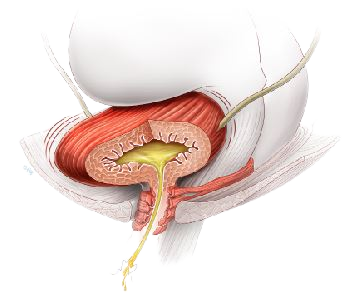Botulinum Toxin (BOTOX) for the Bladder
Introduction
Botox is currently FDA-approved for the treatment of overactive bladder (OAB) and neurogenic detrusor overactivity (NDO). Proper bladder function requires an intact pathway from the brain, to the spinal cord, to the peripheral nerves going to the bladder. Nerve damage occurs to the bladder due to a variety of reasons. Occasionally, the nerve damage is obvious, for example, in patients with chronic neurologic disease of the brain, spinal cord, or peripheral nerves (see figure). Other times, the nerve damage is not so obvious:

How does Botox help in patients with bladder problems?
Botox prevents the bladder muscle (detrusor) from squeezing when it shouldn’t. It does this by blocking the nerve endings from releasing acetylcholine. Acetylcholine is a neurotransmitter which plays a role in the contraction of the bladder muscle.
How is Botox injected into the bladder?
A Botox injection into the bladder is done through a 5-minute procedure. A small telescope (cystoscope) is inserted through the urethra into the bladder. Your doctor will inject Botox into the bladder using a very small needle. This procedure is tolerable with little or no anesthesia.
How long will it take to work?
Typically, the results are seen in as little as two weeks.
What are the risks of Botox injection?
Botox injections into the bladder are typically very safe, and the majority of patients tolerate the procedure well. In 6% of women getting 100 units (overactive bladder), and approximately 15% of patients getting 200 units (neurogenic bladder), patients have difficulty emptying their bladder (urinary retention) after the procedure and require intermittent catheterization or a indwelling catheter until the effect wears off. Rare side effects include difficulty breathing, muscle weakness, or allergic reactions. Please refer to the Botox packet which your doctor will provide you.
How do I schedule this procedure?
Call the office at (973) 947-9066 so we may assist you in this process.


